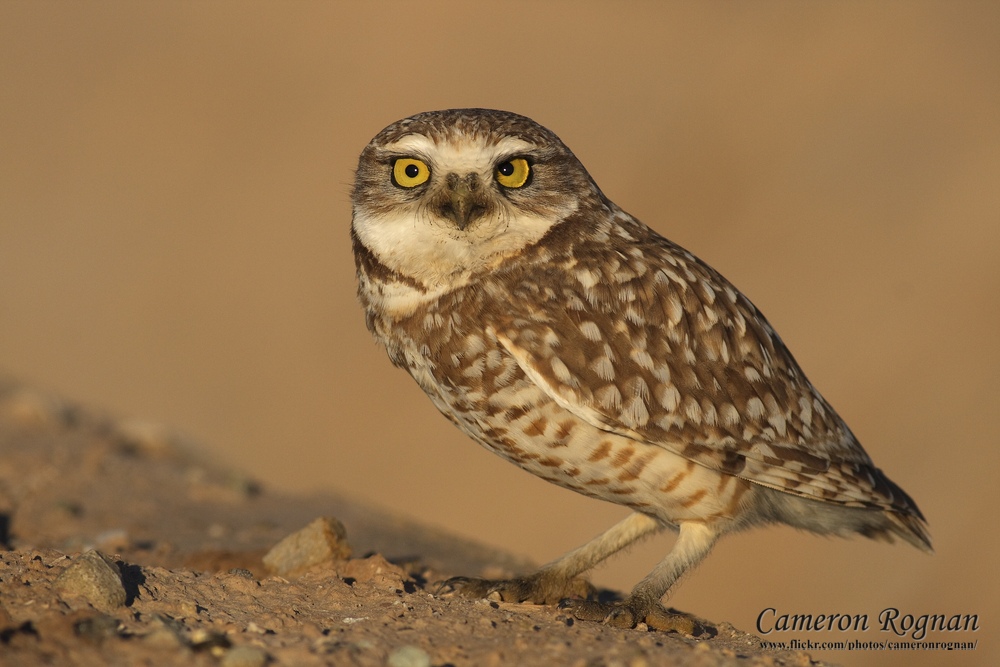Burrowing Owl
(Athene cunicularia)
The burrowing owl is the only small owl that habitually perches on the ground. It is 9-11 inches long with a relatively wide wingspan (22″-24″). Its round head has no ear tufts, and it has a short tail. Burrowing owls often are seen bobbing and bowing from their perch, and they even occasionally flip themselves in the air.
In mid-April, burrowing owls migrate back into Utah to nest. Courtship behavior may be observed near their burrows and consists of the owls rubbing their bills and heads together as well as communicating to one another in soft tones. A nest is constructed in a ground hole, such as in an abandoned prairie dog, badger or marmot burrow. The owls lay 5-9 white eggs, and both parents incubate the eggs for about 21 days. Both parents bring food to the burrow, and the young emerge from the burrow in early June. They remain near the burrow and escape underground when threatened. By mid-July, they are fully fledged and fly short distances. Diet is mainly insects and small mammals.
Because of this, burrowing owls are usually most active in the daytime or at dawn and dusk. They alsoprey on reptiles, amphibians and birds, and they frequently hover when hunting. Burrowing owls leave Utah in November, migrating to southern climates.
